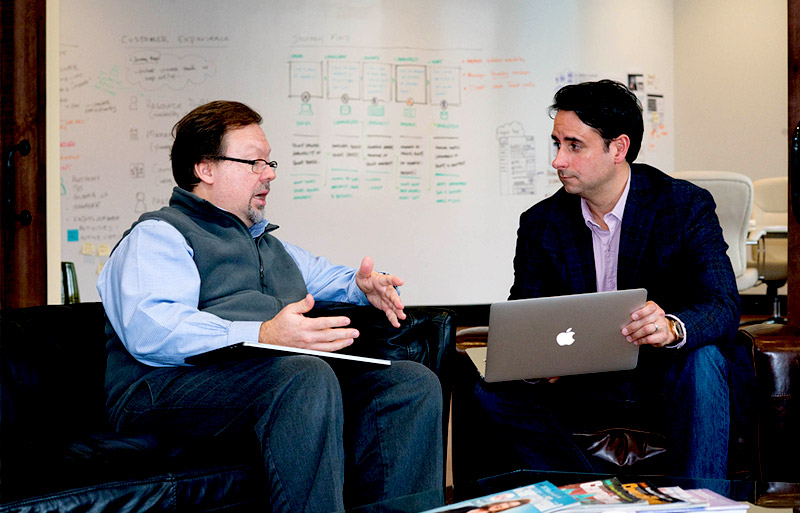I’ve been asked over the years what’s the best way to get into the User Experience (UX) profession and how to get a job. I’ve been running a UX firm for over 15 years now, so I wanted to share some advice on what I think makes a strong candidate. This is not an exhaustive list, but it’s what I deem the most important. If you’re just getting into the field or thinking about making a switch, I highly encourage you to take some classes on Human-Centered Design (HCD) and User Experience. There are many courses online through sites like Coursera and LinkedIn Learning that offer classes on UX. Of course, there are more formal avenues, but these are a great place to start. If you’re a seasoned UX’er, then this list also applies to you.
5 tips on landing your next UX job
1) Make sure you have an accessible and convenient portfolio. I can’t tell you the number of times I’ve interviewed UX designers for a job, and they came to the interview unprepared to show examples. This reflects poorly on your ability to organize, share, and present your work. You can’t bank purely on conversational interviews to win the job. As a UX Designer, you need to show your work. If you’re new to the field, work toward creating a portfolio on your own. This will go a long way in showing your creativity and aptitude.
2) Make sure to know something about the company’s business you’re interviewing with. What’s their core business? You should also have a few ideas on how you can add value right out of the gate. I would look at social media platforms such as LinkedIn and Facebook for clues about the company’s direction and focus. Also, look at their website in detail. Their values and mission are essential to know.
3) Make sure to have an understanding of how UX ties to other disciplines. For example, how does UX fit within CX? Here’s an article we wrote on the subject. How does it relate to marketing and IT? I would have a Point of View (PoV) around this so you can quickly communicate it. This shows depth of knowledge and how you’ll bring value to different areas of the business.
4) Have an understanding of some of the latest prototyping and design tools. If you’re in the UX field, you should have heard of Sketch, inVision, Axure, Figma, etc. I would download these tools and get familiar with them. You have to know about the UX tools practitioners use on a daily basis.
5) Make sure you’re a good fit for the company’s culture. Culture goes both ways, so you should ask yourself if you’re a good fit as well. Culture is critical to making sure you’re career moves in the right direction and that you’re ultimately happy with the company you’ve selected.
I hope this list helps you better prepare for your next endeavor. There’s a lot of demand for good UX designers in the market. Make sure you’re prepared, and you’ll have plenty of options to choose from.
About the Author:
Jason Moccia has over 20 years of experience in the software development field is the CEO of OneSpring LLC (www.onespring.net). OneSpring helps companies to work smarter by providing an entirely new approach to designing solutions.




